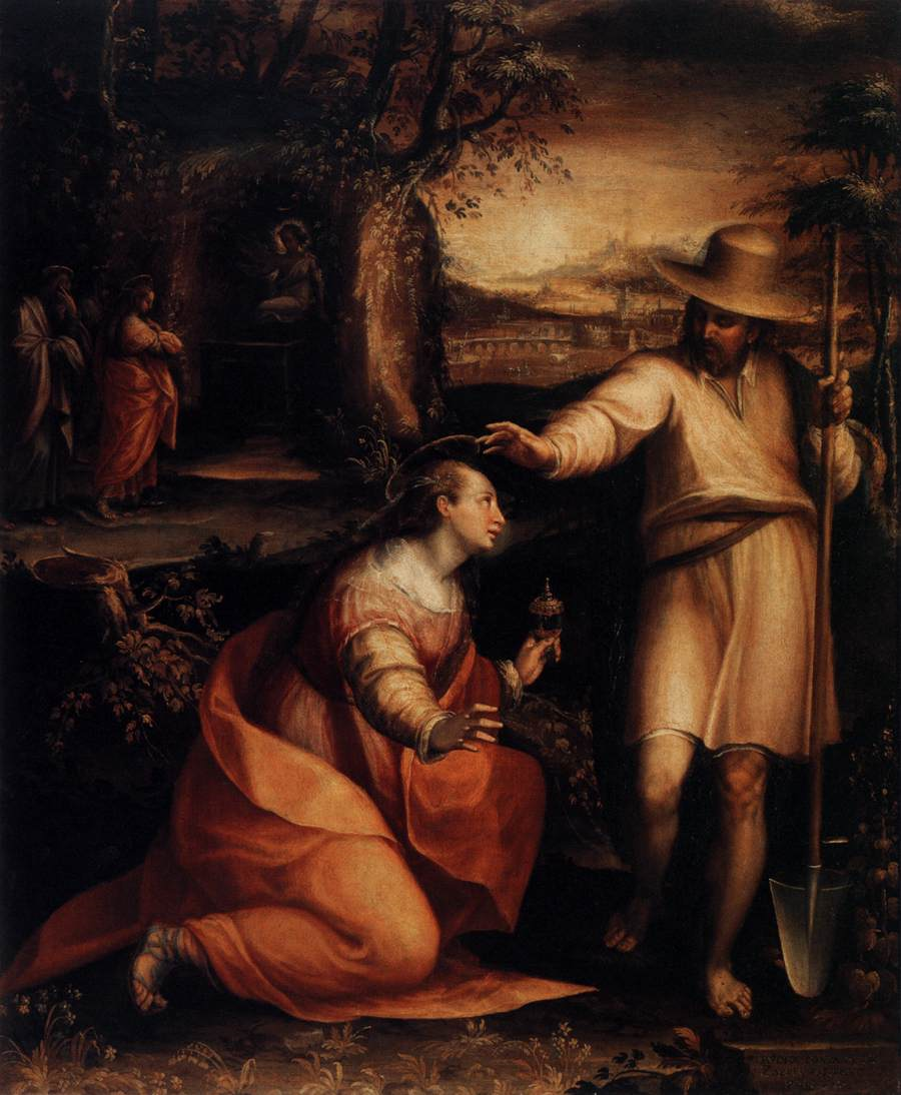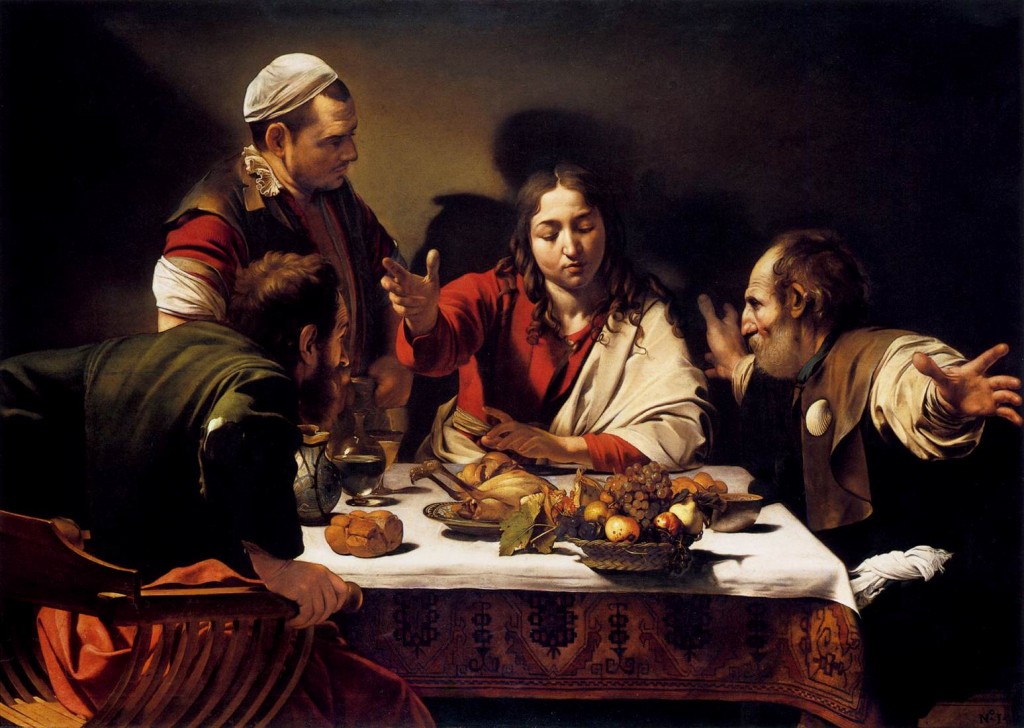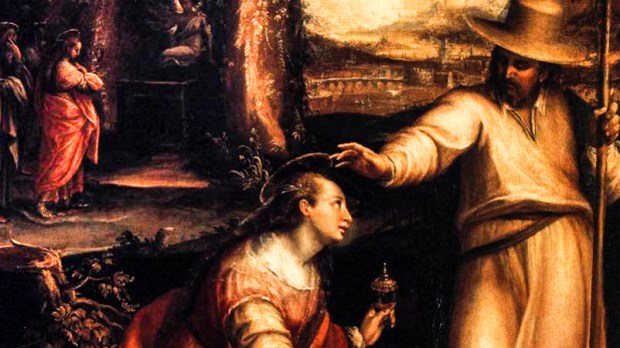Lenten Campaign 2025
This content is free of charge, as are all our articles.
Support us with a donation that is tax-deductible and enable us to continue to reach millions of readers.
Throughout the centuries, the resurrection of Christ has posed particular challenges to Christian art. Paleo-Christian art avoided the subject altogether, perhaps out of respect for the Gospels’ scant detail in describing the blessed event.
After several centuries, however, Christ’s return from death grew into a popular depiction, and imagination began to supply what the scriptural account lacked. From dazzling mosaics to solemn scenes frescoed by Giotto or Piero della Francesca, the kingly Christ stepping out of his tomb amid sleeping soldiers seemed to reconcile the different Gospel accounts. No human had seen Jesus’ exit from the tomb, but thanks to art, the privileged viewer did.
The Renaissance era, with its love of action and emotion, began to take further liberties with the subject. Rearing horses and fleeing soldiers seemed to undermine the quiet mystery of the empty tomb found on Easter morning by a few mourning women.
The Middle Ages had codified the interpretation of Scripture into four types — literal, moral, allegorical, and anagogical. Primacy had been given to the literal, notably by St Thomas Aquinas, but the triumphalism of the Renaissance produced artistic renderings that even the wildest reading of Matthew’s Gospel would not have produced. Matteo da Lecce’s rough and ready version and Bronzino’s supremely affected work drifted from the solemnity of the triumph over death to something that looked more like a Renaissance rave.
Even as the Protestant Reformers claimed the most strict literal adherence to the Gospel, the climate of sola scriptura saw paradoxically a proliferation of biblical interpretations, leading the faithful further from the traditional understanding of scripture, sacraments, saints and salvation.
As Swiss reformer Samuel Werenfels put it,
As one Men open this book, their favorite creed in mind;
Each seeks his own, and each his own doth find.
The Church, seeing the increasingly audacious Catholic variants on Christ’s Resurrection, feared artists were taking the same kind of interpretive liberties as the Protestants. Ultimately, the question arose whether Catholics should sponsor art that seemed to be more a part of the problem than the solution.
But in Christ all things are made new, and therefore, in the final meeting of the Council of Trent in 1563, the Catholic Church affirmed its support of the visual arts, but also demanded clarity and accuracy in the artists’ work. Cardinal Federico Borromeo, like his cousin the great St Charles, penned a treatise on painting in which he lamented “the grave error of painting the resurrection of the Savior.”
“Indeed,” he continued, “they represent Christ rising from the tomb in a way where the soldiers fall to the ground and pose shocked and frozen by the sudden event. This is false and erroneous.”
To portray Christ’s resurrection without intense human reactions seemed impossible for artists, but the Counter-Reformation spurred their creativity by focusing on two other events regarding the Resurrection: Mary Magdalene’s encounter with the risen Christ outside the sepulcher and the Supper at Emmaus. These two images allowed artists to explore the marvel of experiencing Jesus returned from the dead in new and provocative ways. The amazement portrayed was not that of those who had never believed, but of his followers and dearest friends, with whom many of the viewers could identify.
While Barocci, Caracciolo and Francesco Albani all wrestled with the story of Christ’ meeting with the Magdalene (Jn 20:11-17), one of the most poignant Counter-Reformation images of Noli Me Tangere was painted by Lavinia Fontana in 1581. As one of the first successful female painters in history, sponsored by none other than Archbishop Gabriele Paleotti of Bologna, this artist must have found particular meaning in the commission to produce this image of “the apostle to the apostles.”

Fontana’s version emphasized accuracy: Mary Magdalene mistakes Jesus for a gardener, and so she paints him in a broad-brimmed hat holding a shovel. Yet once she has emphasized the literal sense, Lavinia also evokes a beautiful scene. The atmosphere is permeated with warm golden light as a new age is dawning. A little flashback scene in the distance shows the women who have left the city arriving at the tomb where an angel tells them Christ is gone. Mary’s pose in the further scene shows her with the slumped shoulders of dejection, but in the foreground her face becomes radiant with hope. Christ puts out his hand, ostensibly to tell her not to touch Him, but also in a gesture of affectionate blessing. Mary’s gaze is directed toward the wound on his hand made visible for her, but she seems to look beyond it, trying to gaze at his face under the shadowy brim. Proof of his resurrection is not her primary concern as she sinks to her usual place by his feet. The light, setting, and positions evoke a love story, a compelling language that the Counter-Reformation will employ in its time.

The Supper at Emmaus evokes even greater shock and amazement. Repeatedly depicted after Trent, the subject seemed made to measure for Caravaggio with his particular gifts of light and shadow. Caravaggio’s most successful version was produced in Rome in 1601 for the Mattei family. The Milanese painter had just revealed his exciting new technique with light that perfectly suited this theme. The apostles have been walking with Christ, blinded to his identity, but with hearts burning as He opened the scripture to them. Caravaggio represented Christ as beardless, as Michelangelo had done in the Last Judgment, which might explain their slow recognition of the New Adam. Stopping at an inn, the two ask Jesus to dine with them, longing, like Mary Magdalene, to remain in his company. He blesses and breaks the bread and at last they see Him, just as the light from Caravaggio’s mysterious source slices through the space. The reactions, immediate and engaging, make the viewer yearn to be present. The disciple to the left throws out his arms, in which some scholars see a gesture of prayer, others amazement, and others an embrace for their Rabbi, like the Magdalene, who more than just seeing, wants to touch. The other man propels himself out of his chair—to throw himself at Christ’s feet, or into his arms? Certainly not to back away. The beholder longs to be closer, to feel his own heart leap, his senses alive to the Real Presence of the risen Lord among us.
Projecting out into our space—that of the profane, finite and mortal—Caravaggio painted a basket of fruit and a chicken on the table. The flesh dies, the fruit rots, but the bread of life is eternal. Using the power of the physical recognition of Christ resurrected, Caravaggio immediately draws the viewer into our own way of reliving that great joy in the Eucharist.
So, at the very moment the Protestant reformers were promising a more immediate, personal experience of Christ through Scripture, the Catholic church was drawing on that very Scripture to produce artwork that emphasized the intimate, transformative encounter of the faithful with the Risen Lord.

